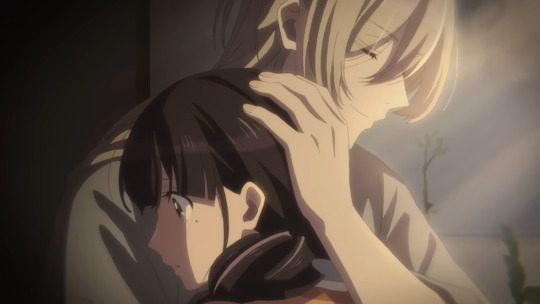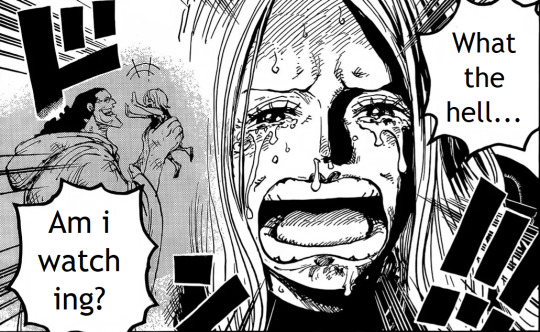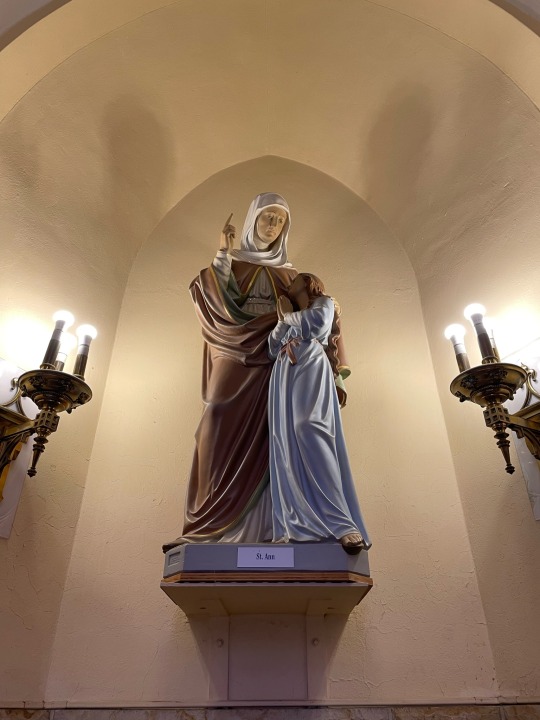#saint ann
Explore tagged Tumblr posts
Text





[Take our telera roll, yet, somewhere high in the desert, near a curtain of a blue. Saint Ann's skirts are billowing. But down here in the city of limelights, and the fans of Santa Ana are withering.]
#s21e06 one street wonders#guy fieri#guyfieri#diners drive-ins and dives#telera roll#saint ann#santa ana#desert#curtain#blue#skirts#city#limelights#fans
8 notes
·
View notes
Text

Moneague hotel in Saint Ann, Jamaica
Jamaican vintage postcard
#postcard#ansichtskarte#briefkaart#jamaica#photography#carte postale#vintage#postkarte#photo#saint#historic#postkaart#hotel#ephemera#sepia#jamaican#saint ann#moneague#tarjeta#postal
6 notes
·
View notes
Text
‼️BREAKING‼️
shauna shipman’s favourite saint is St. Anthony!! the patron saint of lost things, amputees, animals, oppressed people, poor people, pregnant women and shipwrecks to name a few!!
also St. Brigid who is the patron saint of midwives, newborns, fugitives, scholars + more!!!
#daisys whimsical words#yellowjackets#yj#shauna shipman#sorry#had to break out my catholicism#saint anthony#saint brigid#UGH SAINT ANN#okay sorry#SAINT ANN#JESUS CHRIST#omg#no#okay#it’s okay#it is
16 notes
·
View notes
Text

Taking a stroll under the palm trees in Ocho Rios in the Saint Ann parish of Jamaica.
#ocho rios#travelblr#travelling#chierotti#travelphotooftheday#original photography#nature#vertical#trees#palm trees#jamaica🇯🇲#jamaicalove#saint anne#saint ann
4 notes
·
View notes
Text

#saint ann#jamaica#jamaican#west indies#west indian#musician#musicans#local musican#local musicians#caribbean#caribbean sea#photography
3 notes
·
View notes
Text
Malcolm, Marcus, Marley and Martin: A look at connections between four icons of Keyamsha, the Awakening
Malcolm X…Marcus Garvey…Bob Marley…Martin Luther King, Jr. Those four names are synonymous with Keyamsha, the Awakening. Interestingly, their names all have the letter “M.” In this post we look at several facts that connect these men. What led to such connections? Coincidence? Synchronicity? Fate? Destiny? Something we can not begin to comprehend? All of the above? We start with the first and…
View On WordPress
#atlanta#bob marley#declaration of rights of the negro peoples of the world#Dr. Martin Luther King#jamaica#malcolm x#marcus garvey#mary turner#montgomery improvement association#nation of islam#red black and green#red summer#reverend earl little#saint ann#The Universal Negro Improvement Association#unia
1 note
·
View note
Text










The Most Romantic Anime Scenes of 2023
#Sugar Apple Fairy Tale#My Happy Marriage#Detective Conan#The Apothecary Diaries#Horimiya#Sacrificial Princess and the King of Beasts#Why Raeliana Ended Up at the Duke's Mansion#My Love Story with Yamada at Lv999#The Saint's Magic Power is Omnipotent#Sailor Moon Crystal#Anime#Moments#Anne x Shall#Miyo x Kiyoka#Usagi x Mamoru#Sei x Hawke#Hori x Miyamura#Noah x Raeliana#Maomao x Jinshi#Leonhart x Sariphi#Akane x Yamada
1K notes
·
View notes
Text







here's something to lighten the mood.
i went to Saint Anne's Shrine in Isle La Motte, VT today.
let Ragapom come along for a date.
#the amazing digital circus#tadc#pomni#ragatha#ragapom#buttonblossom#jesterdoll#vermont#isle la motte#saint anne's shrine
392 notes
·
View notes
Text
Anne-Josèphe Théroigne, widely known by the name Théroigne de Méricourt, was a participant in the storming of the Bastille, the leader of the women's march on Versailles, and advocated for the creation of a women's guard. A bright and tragic personality of the era of the great French Revolution.


I believe that you can note some similarities between Théroigne's pose in my drawing and Eugene Delacroix's painting "Liberty Leading the People." And this is no coincidence, since I wanted to make a reference to the image of Marianne (that is the name of this lady in the Phrygian cap, who is still a symbol of France), because, according to one legend, Delacroix, when creating the canvas, was inspired by the image of the citizen Méricourt, and portrayed exactly her.

#history#french history#history art#revolution#french revolution#theroigne de mericourt#robespierre#antoine saint just#artists on tumblr#digital art#anne josephe theroigne
245 notes
·
View notes
Text








Emily can’t get enough of Rebecca Actors on Actors: Emily Blunt and Anne Hathaway ☕️
[+] EMILY BLUNT 🌻 [+] ANNE HATHAWAY 🌹 [+] ..more about Rebecca in ‘EILEEN’ 🎬
895 notes
·
View notes
Text
okay im sorry but. 1098 is just way too much for me to drop a review on it. been trying to work on it for a bit and every time i try it just turns out horrendous. this chapter broke me man. i can't give my thoughts on it coherently 😭
so have some memes instead (let me cope in peace).








cool shanks and mihawk art if you need to cope too (artist)


#one piece#op manga#one piece 1098#op 1098#one piece chapter 1098#jewelry bonney#one piece meme#one piece bonney#op bonney#anne bonney#ginny one piece#kuma one piece#bartholomew kuma#egghead island#one piece manga#celestial dragons#saint saturn#this chapter was HEAVY#one piece shanks#shanks one piece#shanks#red haired shanks#hawkeye mihawk#takanome mihawk#one piece mihawk#dracule mihawk#one piece fanart#one piece art#op fanart#op art
673 notes
·
View notes
Text






Eileen (2023)
#movie#film#movie scene#film scene#movie quote#film quote#eileen#eileen 2023#2023#anne hathaway#thomasin mckenzie#rebecca saint john#eileen dunlop
462 notes
·
View notes
Text

Anne Sexton, from The Complete Poems of Anne Sexton; "The Saints Come Marching In,"
#lit#anne sexton#poetry#quotes#words#poetry collection#fragments#excerpts#selections#writings#the saints come marching in#p
522 notes
·
View notes
Text

L’Homme Rivière The River Man
#quebec city#quebec#canada#statue#art#L’Homme Rivière#The River Man#Rue Sainte-Anne#photographers on tumblr#canadian photography#original photographers
55 notes
·
View notes
Text






look for the name SAINT (requested by anonymous) | ann demeulemeester loose white dress (s/s 1997), { hair } audrey marnay @ tse a/w 1999, zoran light brown soft leather sandals, alkemia "gothique" perfume ("a byzantine monastic incense recipe of somalian frankincense, styrax benzoin, arabian myrrh, cassia, spikenard, canella, liquidambar orientalis, labdanum, atlas cedar, and vetiver."), lamagdala (on etsy) "our lady of kevelaer crowned by angels" genuine gray druzy agate choker necklace (featuring german inscription: "O Mary Conceaved Without Sin Pray For Us Who Have Recourse To Thee.") (medal c. 18oo's)
#saint#name#request#outfit#neutrals#hope you like !#brown#white#ann demeulemeester#hair#audrey marnay#tse#zoran#flats#sandals#footwear#leather#alkemia#perfume#edp#monastic#lamagdala#etsy#necklace#jewellry#agate#iconography#queue
115 notes
·
View notes
